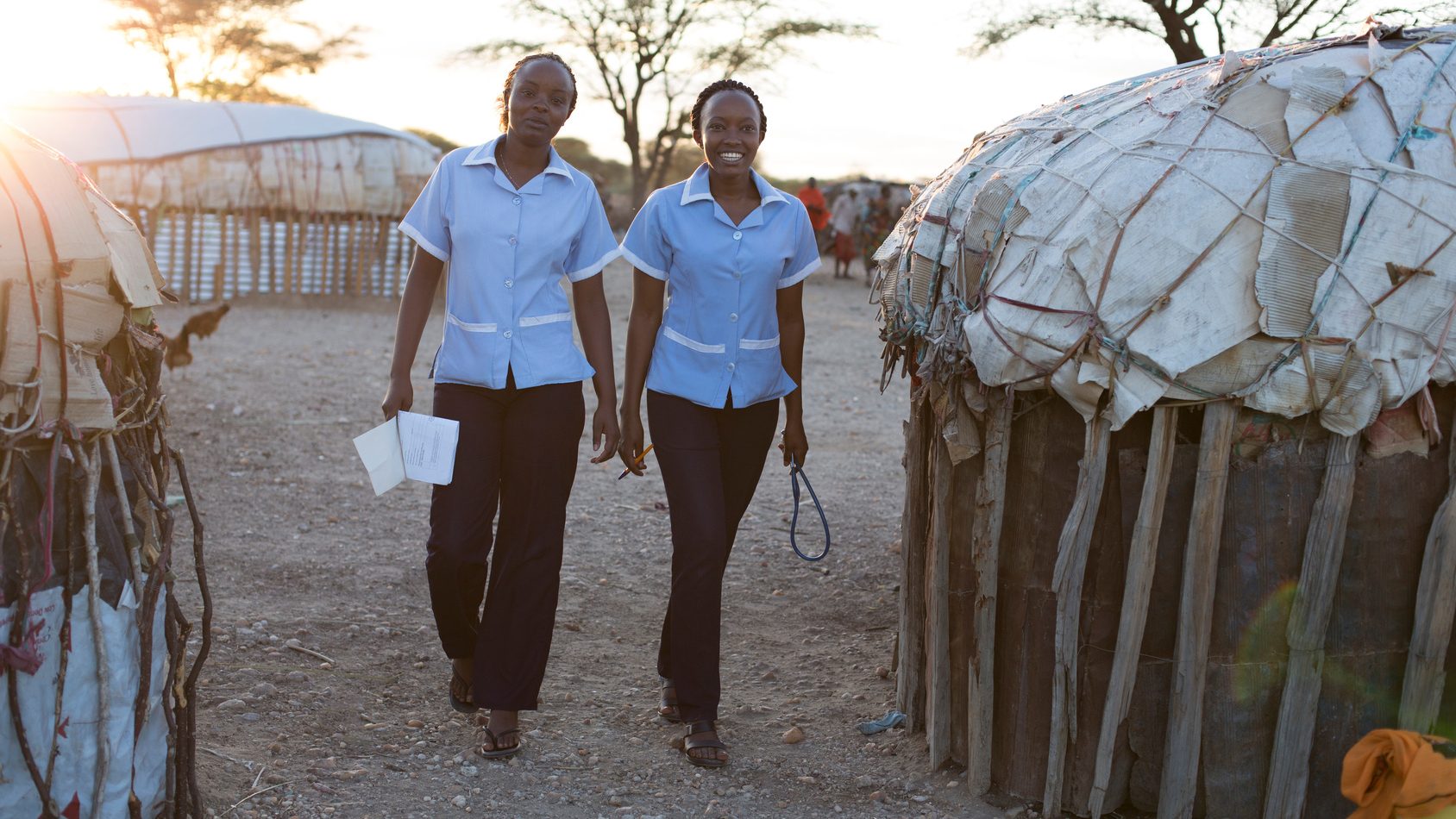
Context
In Kenya, cervical cancer is the leading cause of all cancer deaths and the second most common cancer in women. The Kenyan Ministry of Health rolled out the HPV vaccine nationally in October 2019, targeting 10-year-old girls. HPV vaccine is now available for free to all girls ages 10-14 years alongside other routine vaccines through over 9,000 public, private, non-government, and faith-based health care facilities. Kenya’s National Vaccines and Immunization Program continues to make efforts to increase HPV vaccination rates among age-eligible girls.
Project
To increase the uptake of the HPV vaccine in Kenya, a 3-part behavioural research study was led by the Busara Center for Behavioural Economics aimed at providing an evidence-based, locally effective, social and behavioural change communications solution. Parts one and two are summarised here and highlight the key role of community health extension workers and volunteers (referred to as CHWs from this point forward) in encouraging and supporting parents and guardians to choose HPV vaccination for their daughters. This project is part three of our work, undertaken to explore the best channels and mechanisms to increase the effectiveness of interactions between CHWs and parents/guardians. For more details, see the full research reports linked below.
Behavioural Assessment and Design
To find the best ways to mobilise CHWs to advocate for and encourage parents/guardians to take their 10-year-old daughters to receive the HPV vaccine, it was important to understand both perceptions and attitudes of CHWs towards the HPV vaccine in greater detail. Also important was understanding the best channels and mechanisms for CHWs to recommend the HPV vaccine and share information with parents/guardians, as well as CHWs’ workload. The study had two components:
- In-depth individual interviews with seven CHWs, and
- An ethnographic study involving in-depth observational studies with three selected CHWs to more closely observe a “day in the life” of their work.
Results
Intrinsic motivation: CHWs seemed to be intrinsically motivated to fulfil their roles as community health supporters. Their motivation stemmed from wanting to help their community and empower the community with information that is beneficial and useful for development. They set aside 2-3 days a week from their regular jobs or routines for community service.
Lack of information: The majority of CHWs in our study sample had no formal HPV vaccination training. They obtained their information primarily by conversing with the nurses and doctors at the health facilities with which they work. While they were aware of the HPV vaccine, the number of doses, and the age group targeted, they wanted to know more about the vaccine including the potential side effects and why the specific age group was chosen. They believed the vaccine was important but wanted to be better informed about it to help other members of the community embrace it as well.
Lack of tangible resources: A common challenge that CHWs mentioned facing when interacting with parents/guardians around the HPV vaccine was the lack of resources and materials (such as pamphlets, brochures, and banners) to enhance the sharing of information.
Lack of incentives: The CHW position was a voluntary position with no structured monetary incentives. There was no compensation given to CHWs and many times they had to financially support community members to get services. This made their jobs harder and increased frustration levels among CHWs, decreasing their motivation to continue to deliver in their roles.
Lack of identification: CHWs engaged in the study did not have any identification card which made it difficult for community members to trust them with their personal information as they could not properly support their identities as CHWs.
Translating Insights into Action
Based on the research, we recommend the following to prepare and support CHWs in Kenya. Ongoing advocacy may be a solution to address structural barriers such as monetary incentives:
- Provide additional trainings to CHWs: Initiatives should include basic training on cervical cancer and its prevention through HPV vaccination.
- Equip CHWs with resources: Resources on HPV vaccination should be designed for CHWs to carry and use as reference during home visits with parents and guardians.
- Provide CHWs with resources for parents/guardians: Resources should be designed for parents/guardians with actionable information that CHWs can leave behind at the end of their home visits.
- Consider feasible wearable products with identification: Initiatives may consider providing products like a badge, name tag, cap, t-shirt, or vest that CHWs can wear during community outreach to serve as a visual identification.
Read full reports on the first two study components:
- Part one: In-depth interviews with CHWs
- Part two: A day in the life of CHW study